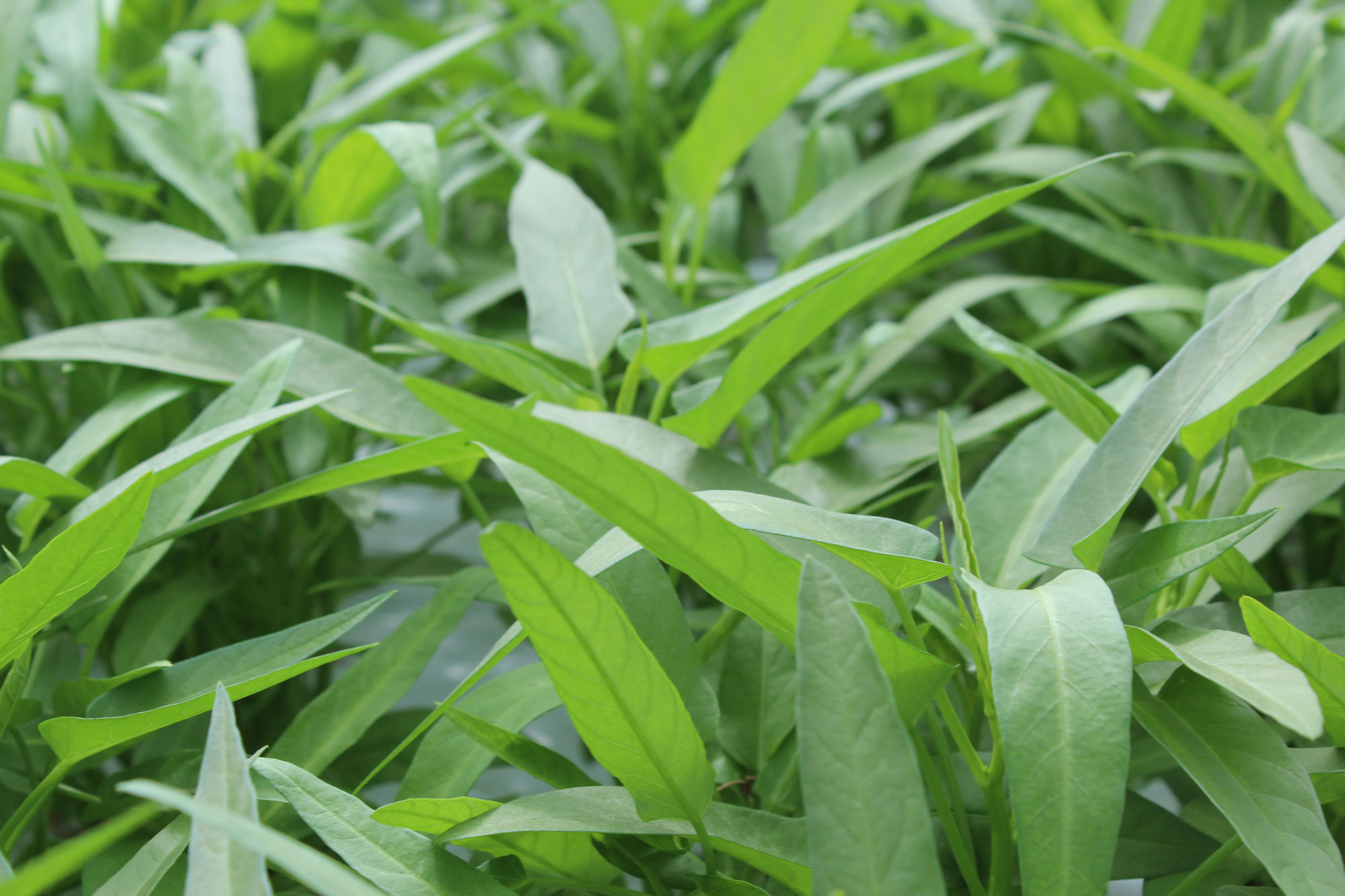
What is Ong Choi?
Ong Choi (Ipomoea aquatica), is a member of the Morning Glory family (Convolvulaceae) and is of East Indian origin. The most common varieties are bright green and grow up to 14 inches tall. Ong Choi is an extremely popular vegetable in Southern China, Vietnam, Malaysia and Thailand. In Chinese, Ong Choi literally translates as "hollow vegetable".
Almost all parts of the young plant are eaten, although the shoot tips and younger leaves are preferred. Older stems that are from plants cultivated on dry land, contain considerable fiber and therefore the cultural methods emphasize the production of young succulent tips.
Here in Europe, Ong Choi is sometimes treated as ordinary spinach, where it is sauteed with butter and garlic, or with bacon, and tossed with a little vinegar and sugar. In contrast, the Chinese will consume this vegetable in a variety of ways such as in soup, batter fried, or raw.
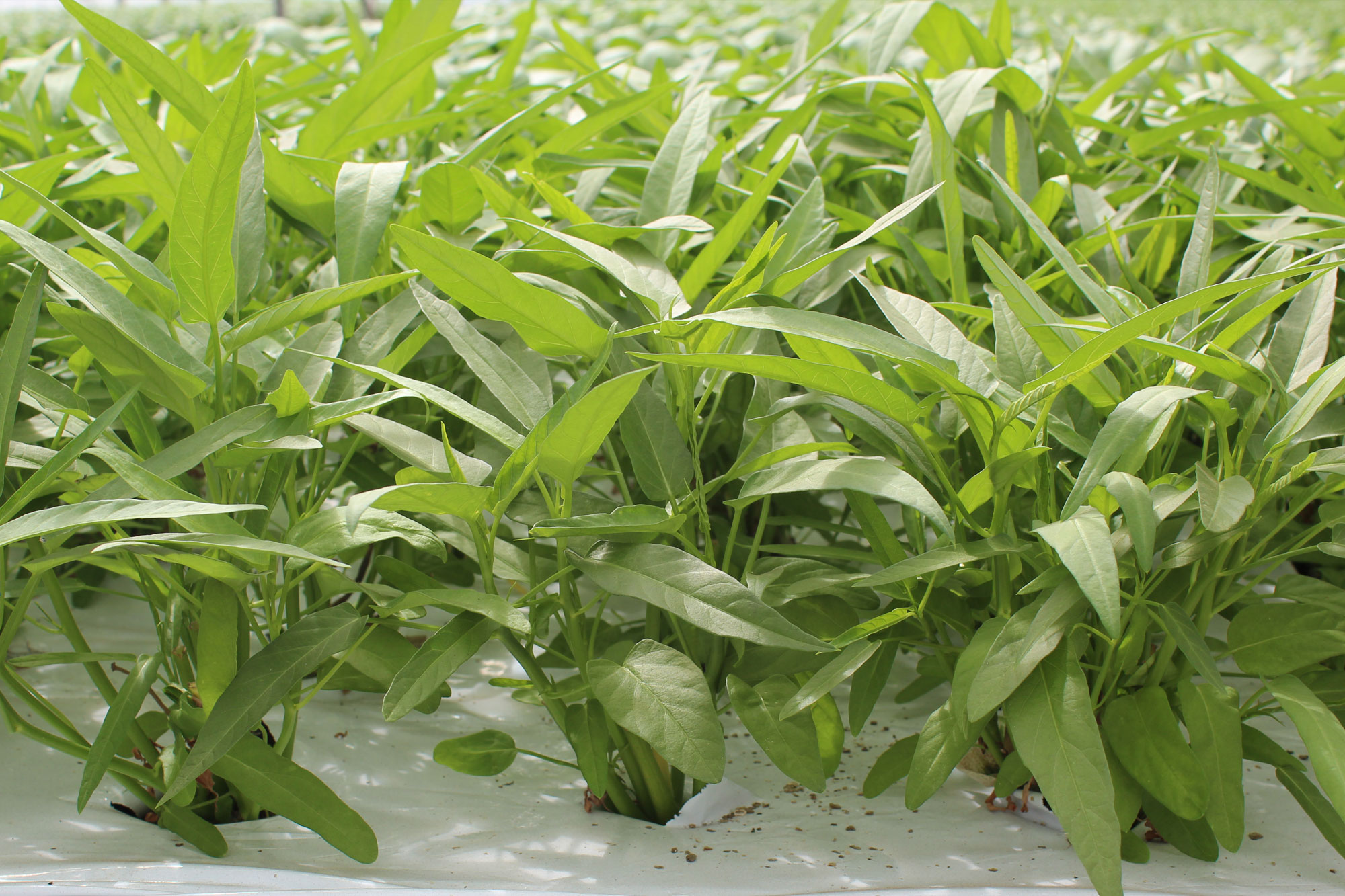
Other Ong Choi Names
Morning Glory, Chinese Water Spinach, Kankun, Kong Xin Cai (Kong Shin Tsai), Chau Gan Choi, Rau Muon, and Swamp Cabbage.
Availability
- Jan
- Feb
- Mar
- Apr
- May
- Jun
- Jul
- Aug
- Sep
- Oct
- Nov
- Dec
- Jan
- Feb
- Mar
- Apr
- May
- Jun
- Jul
- Aug
- Sep
- Oct
- Nov
- Dec
AvailableLimited
Where to buy Ong Choi?
Ong Choi can be found at most specialist Oriental outlets. For trade sales enquiries, please contact office@rokewood.co.uk or call us on 01945 583033.
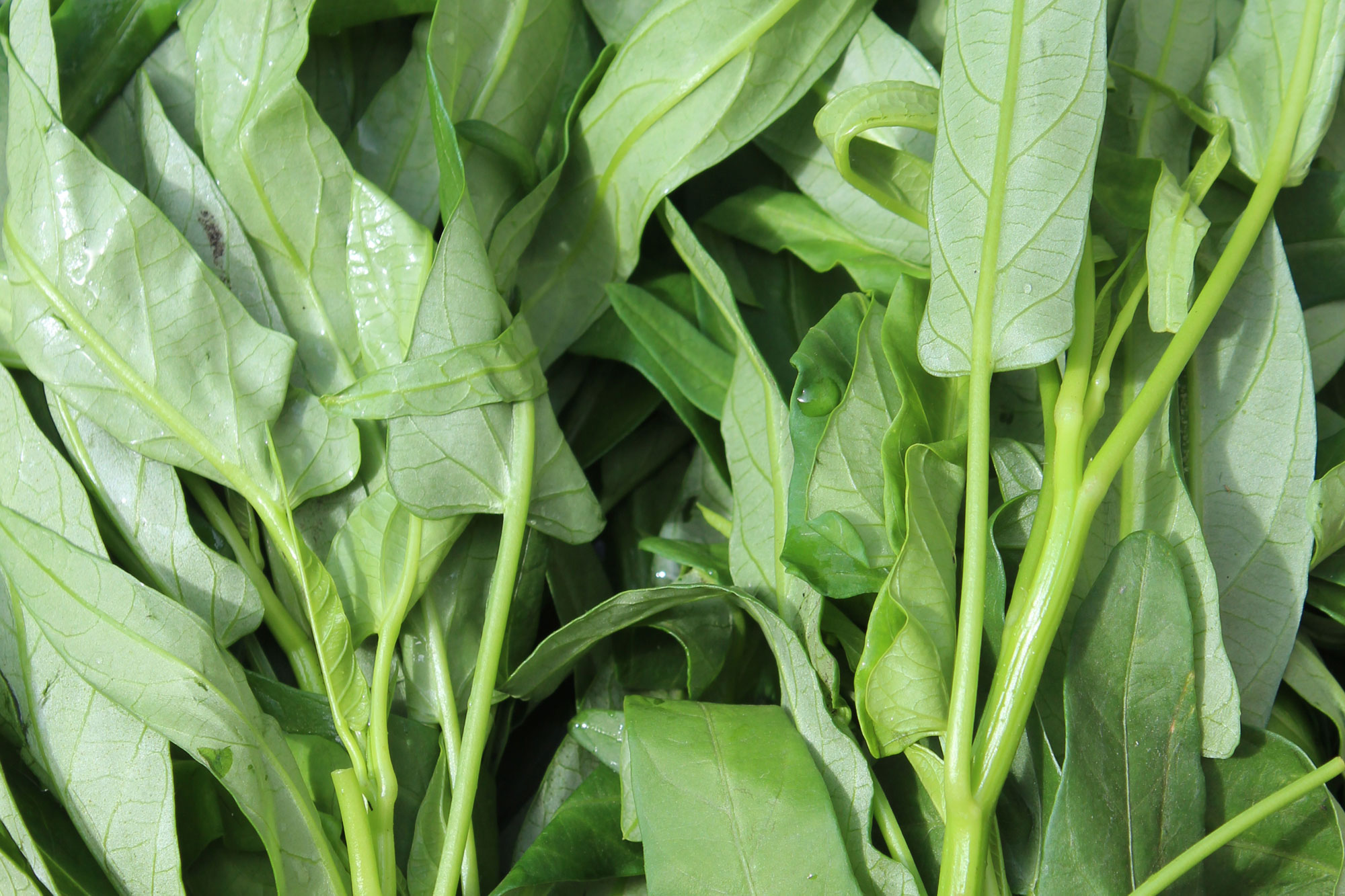
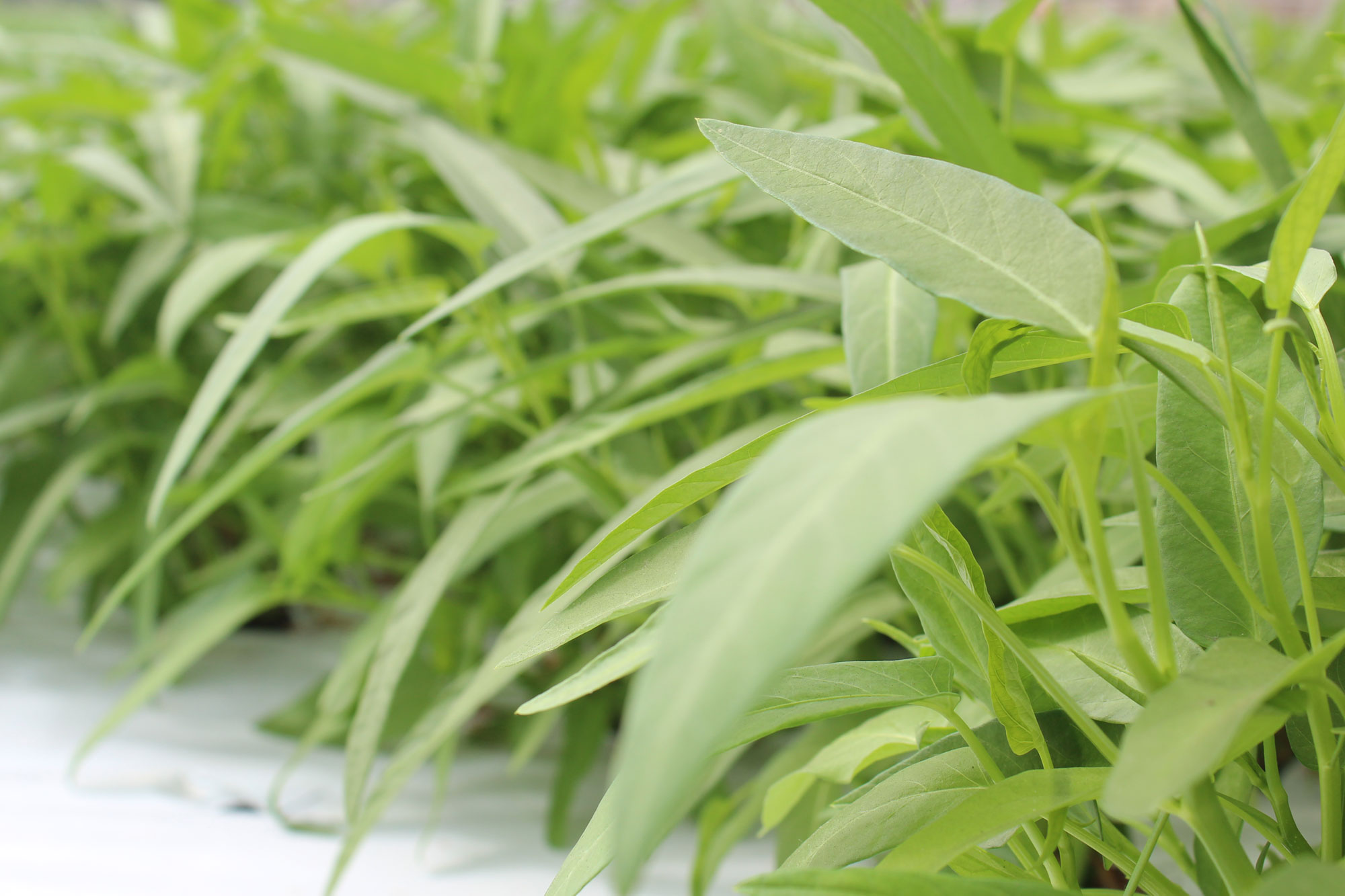
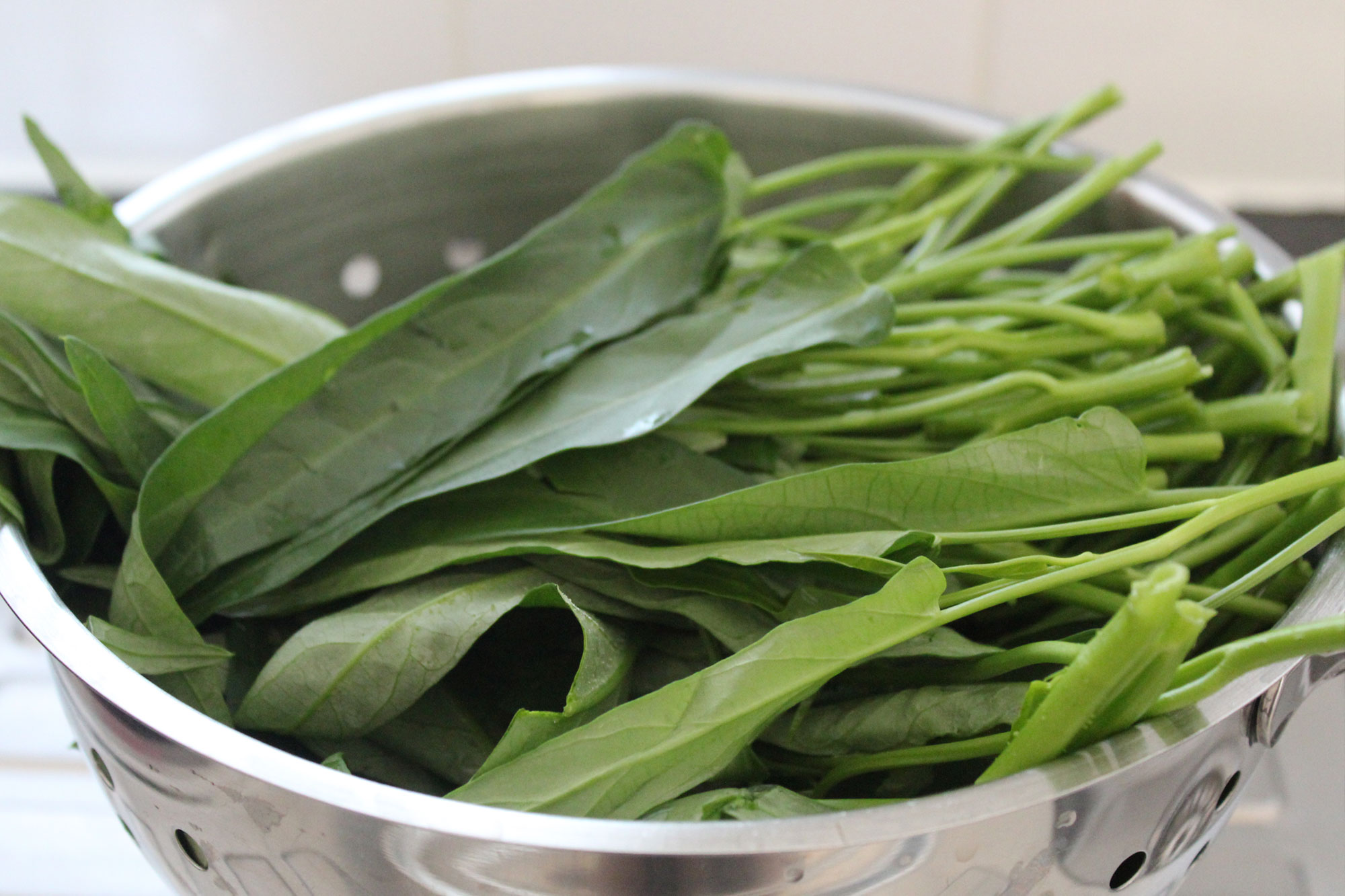
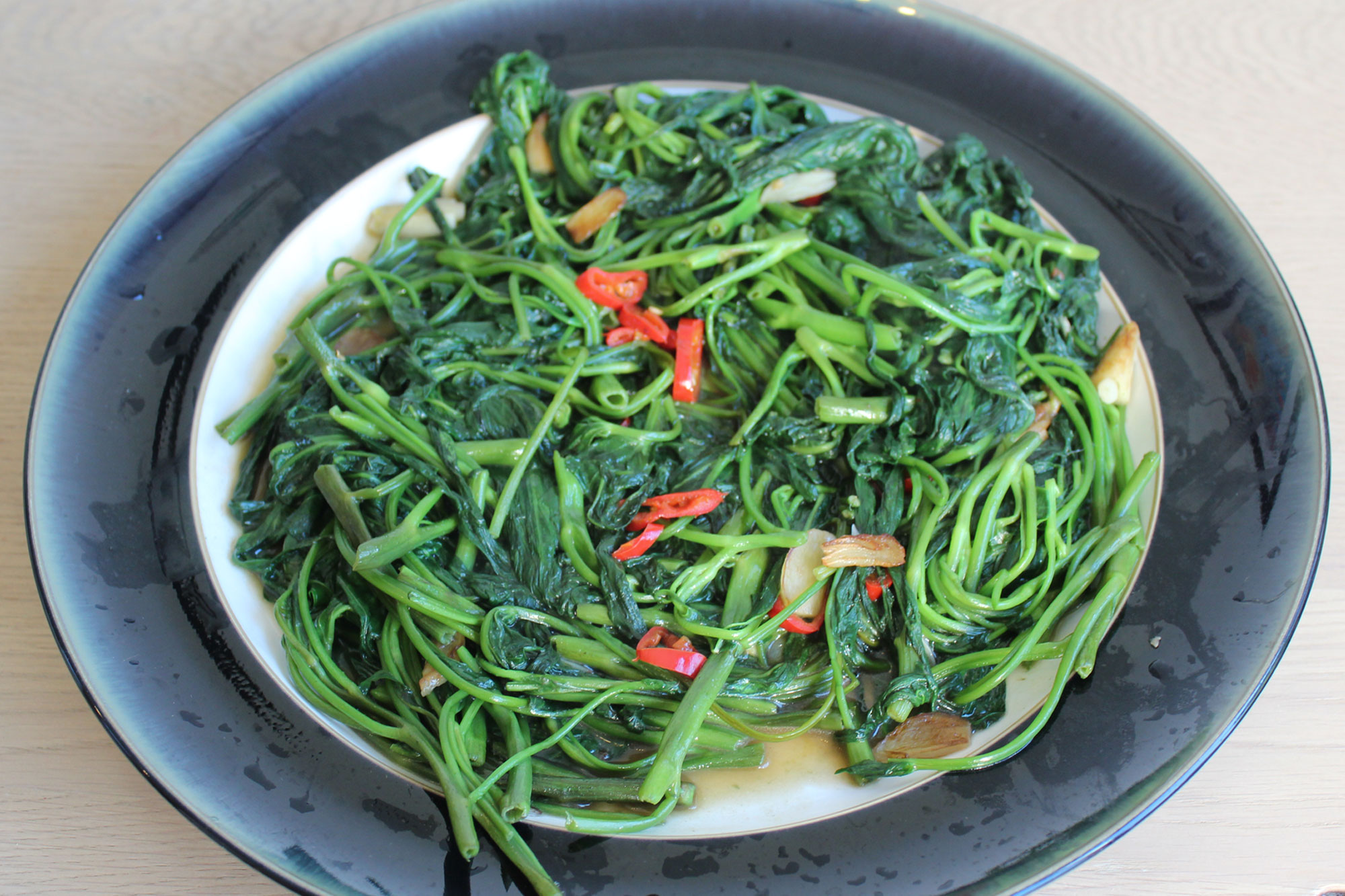
Storing Ong Choi
Ong Choi deteriorates rapidly once picked, so ideally it must always be used very fresh.
How To Cook & Prepare Ong Choi
The leaves can be used whole, or cut into smaller pieces and like ordinary spinach, the stems require slightly longer cooking than the leaves.
Lightly boil, steam, stir-fry with shrimp paste, combined with other greens and used in soups. Try our quick and easy stir fry Ong Choi recipe.
The Cantonese exclusively stir-fry it, with a generous amount of garlic (or garlic shallots) and either white fermented bean curd or fermented shrimp sauce; chilli is commonly added. In Thailand, Ong Choi is known as phak bung, and is eaten raw, often with green papaya salad or nam phrik, in stir-fries and also in curries. Ong choi is a common ingredient and garnish in Vietnam cuisine. In the South of Vietnam, Ong Choi is julienned into thin strips and eaten with many kinds of noodles. Other popular Vietnamese Ong Choi dishes include adding to sour soup (canh chua), Ong Choi sauteed with chopped garlic, oil and fish sauce, then served as a side dish. In Laos, ong Choi is known as pak bong, and in Burma, gazun ywet, here it is usually stir-fried with oyster sauce or yellow soybean paste, and garlic and chillies. In Cambodia, Ong Choi is called trakuon and is used in many traditional dishes. In the Philippines, it is called Kang Kong, and used in in fish and meat stews, such as sinigang. Again, a very popular way of cooking Ong choi is is sauteed in cooking oil, onions, garlic, vinegar, soy sauce, and bouillon cube.
You may also be interested in...
See also Tong Ho >>.